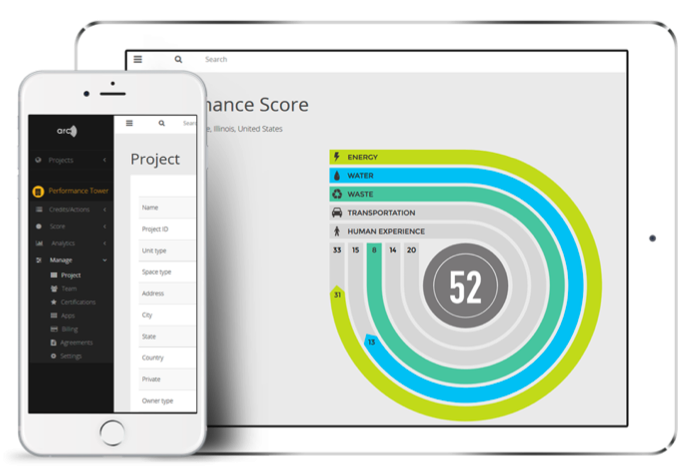App Tracks Urban Water and Energy Consumption
Published on by Water Network Research, Official research team of The Water Network in Technology
Using the Arc performance platform, LEED for Cities projects can measure and manage their city’s water consumption, energy use, waste, transportation and human experience.
By Dina Farone
Imagine an app that tracks how an entire city performs, how much fuel it needs or how much waste it generates. This is the concept behind the LEED for Cities platform.

Arc Dynamic Plaque (Source: arcskoru.com)
Certain buildings that have achieved a standard of sustainability are awarded a “Leadership in Energy and Environmental Design” (LEED) certification by the U.S. Green Building Council (USGBC). You may have seen a plaque celebrating this achievement affixed to the entrance of your office building. This has become the most widely recognized symbol for green buildings around the world. But even though greener buildings play an essential role in preventing climate change, cities can have a much bigger hand in these efforts.
Through the implementation of a new platform called Arc, the LEED rating system for buildings can now be applied to cities. A single building can achieve certification by gaining points in different credit categories such as energy, water, waste, transportation, and human experience. Once the building has been built and gained its points, it is awarded its LEED certification. But a city is fluid and constantly changing. So how can it achieve a similar certification?
LEED for Cities is not about rewarding the final product. Instead, this certification recognizes cities that are taking the steps to track their operations and reduce their environmental impact. Similar to FitBits tracking human health, LEED for Cities will track the well-being of a whole city. Cities are centers for commerce, culture, and consequently, greenhouse gas emissions. Larger cities consume two-thirds of the world’s energy and create about a quarter of the global carbon dioxide emissions. But as the root of the problem, cities have the opportunity to be the solution. By using the Arc platform, cities can track their environmental impact by sharing data across various metrics.
Read full article: Earth Institute - Columbia University
Attached link
http://www.youtube.com/embed/09h09QhNydsMedia
Taxonomy
- Technology
- Integrated Urban Water Management
- Urban Water
- Urban Resource Management
- Urban Water Supply
- Consumption
- Urban Water Infrastructure
- Mobile Apps
- Water Software
- Software Integration
- Urban Engineering